
Loews Cineplex Entertainment, also known as Loews Incorporated, is an American theater chain operating in North America. From 1924 to 1959, it has also been the parent company of Metro-Goldwyn-Mayer Studios (MGM). It was formerly jointly owned by Sony Pictures and Universal Studios and operated theatres in the United States, Canada, South Korea, Spain and Mexico.

AMC Entertainment Holdings, Inc. is an American movie theater chain founded in Kansas City, Missouri and now headquartered in Leawood, Kansas. It is the largest movie theater chain in the world. Founded in 1920, AMC has the largest share of the U.S. theater market ahead of Regal and Cinemark Theatres.
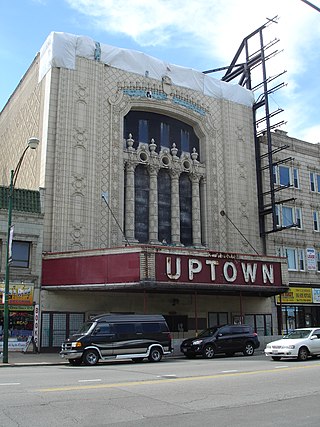
A movie palace is any of the large, elaborately decorated movie theaters built between the 1910s and the 1940s. The late 1920s saw the peak of the movie palace, with hundreds opening every year between 1925 and 1930. With the advent of television, movie attendance dropped, while the rising popularity of large multiplex chains in the 1980s and 1990s signaled the obsolescence of single-screen theaters. Many movie palaces were razed or converted into multiple-screen venues or performing arts centers, though some have undergone restoration and reopened to the public as historic buildings.
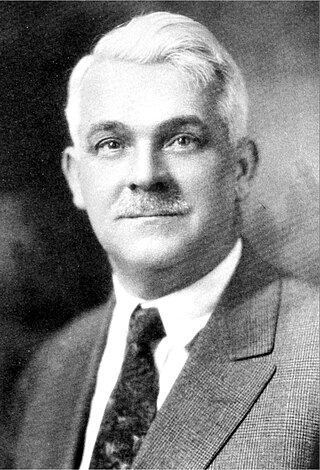
Thomas White Lamb was a Scottish-born, American architect. He was one of the foremost designers of theaters and cinemas in the 20th century.

Playhouse Square is a theater district in downtown Cleveland, Ohio, United States. It is the largest performing arts center in the US outside of New York City. Constructed in a span of 19 months in the early 1920s, the theaters were subsequently closed down, but were revived through a grassroots effort. Their renovation and reopening helped usher in a new era of downtown revitalization in Cleveland, and was called "one of the top ten successes in Cleveland history."

The Kings Theatre, formerly Loew's Kings Theatre, is a live performance venue in the Flatbush neighborhood of Brooklyn, New York City. Opened by Loew's Theatres as a movie palace in 1929 and closed in 1977, the theater sat empty for decades until a complete renovation was initiated in 2010. The theater reopened to the public on January 23, 2015 as a performing arts venue. It was listed on the National Register of Historic Places on August 22, 2012.
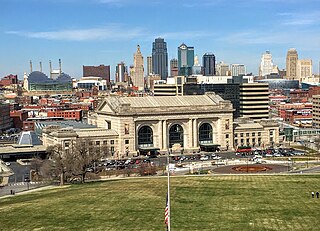
Downtown Kansas City is the central business district (CBD) of Kansas City, Missouri and the Kansas City metropolitan area. It is between the Missouri River in the north, to 31st Street in the south; and from the Kansas–Missouri state line eastward to Bruce R. Watkins Drive as defined by the Downtown Council of Kansas City; the 2010 Greater Downtown Area Plan formulated by the City of Kansas City defines the Greater Downtown Area to be the city limits of North Kansas City and Missouri to the north, the Kansas–Missouri state line to the west, 31st Street to the south and Woodland Avenue to the east. However, the definition used by the Downtown Council is the most commonly accepted.
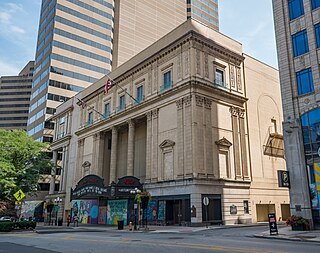
The Ohio Theatre is a performing arts center and former movie palace on Capitol Square in Downtown Columbus, Ohio. Known as the "Official Theatre of the State of Ohio", the 1928 building was saved from demolition in 1969 and was later completely restored. The theater was declared a National Historic Landmark in 1977 as one of the nation's finest surviving grand theaters.

The Loew's Jersey Theatre is a theater in Jersey City, New Jersey. Opened in 1929, it was one of the five Loew's Wonder Theatres, a series of flagship Loew's movie palaces in the New York City area. It was designed by the architectural firm of Rapp and Rapp in a Baroque/Rococo style. Tri-plexed in 1974, and then closed in 1986, it was dark for years. It was purchased by the city in 1993 and has been operated by a volunteer organization, the Friends of the Loews, since that time. The theater was designated as a New Jersey Registered Historic Site in 2009. In a move opposed by Friends of the Loews, the city in June 2014, agreed to let AEG Live operate the venue. After going to court, the lease by Friends of the Loews remains in effect. In 2022, a $72 million restoration project was started by Devils Arena Entertainment, a division of Harris Blitzer Sports & Entertainment, with completion being expected by 2025.

The Chicago Theatre, originally known as the Balaban and Katz Chicago Theatre, is a landmark theater located on North State Street in the Loop area of Chicago, Illinois. Built in 1921, the Chicago Theatre was the flagship for the Balaban and Katz (B&K) group of theaters run by A. J. Balaban, his brother Barney Balaban and partner Sam Katz. Along with the other B&K theaters, from 1925 to 1945 the Chicago Theatre was a dominant movie theater enterprise. Currently, Madison Square Garden, Inc. owns and operates the Chicago Theatre as a performing arts venue for stage plays, magic shows, comedy, speeches, sporting events and popular music concerts.

Saenger Theatre is an atmospheric theatre in downtown New Orleans, Louisiana, which is on the National Register of Historic Places. Once the flagship of Julian and Abe Saenger's theatre empire, today it is one of only a handful of Saenger movie palaces that remain.

The Victory Theatre is a 1,950 seat venue in Evansville, Indiana. It is home to the Evansville Philharmonic Orchestra and also hosts local ballet and modern dance companies, theatre companies, and touring productions.

The Uptown Theater, known as The Uptown, was a single-screen movie theater in the Cleveland Park neighborhood of Washington, D.C. Opened in 1936, it hosted the world premieres of such movies as 2001: A Space Odyssey and Jurassic Park. It closed in March 2020.

The KeyBank State Theatre is a theater located at 1519 Euclid Avenue in downtown Cleveland, Ohio. It is one of the theaters that make up Playhouse Square. It was designed by the noted theater architect Thomas W. Lamb and was built in 1921 by Marcus Loew to be the flagship of the Ohio branch of the Loew's Theatres company.

The Robert Morton Organ Company was an American producer of theater pipe organs and church organs, located in Van Nuys, California. Robert Morton was the number two volume producer of theatre organs, building approximately half as many organs as the industry leader Wurlitzer. The name Robert Morton was derived not from any person in the company, but rather from the name of company president Harold J. Werner's son, Robert Morton Werner.

The Landmark Theatre, originally known as Loew's State Theater, is a historic theater from the era of movie palaces, located on South Salina Street in Syracuse, New York, United States. Designed by Thomas W. Lamb, it is the city's only surviving example of the opulent theatrical venues of the 1920s. The Landmark is on the National Register of Historic Places.

The Mainstreet Theater, also commonly referred to as The Empire Theater, is a historic theater in downtown Kansas City, Missouri in the Power & Light District. The theater was landmarked and placed on the National Register of Historic Places in February 2007.

The Hippodrome Theatre is a theater in Baltimore, Maryland.
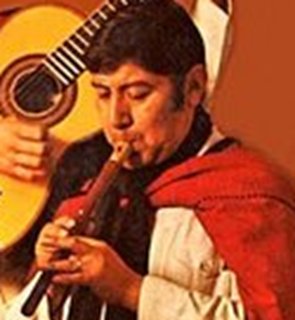
Gerardo I. Lopez, also known as Gerry Lopez, is the former CEO and President of Extended Stay America, Inc. He was previously CEO and President of AMC Entertainment Holdings, Inc.; Marquee Holdings Inc.; and AMC Entertainment Inc..























